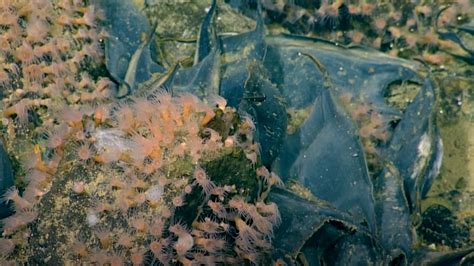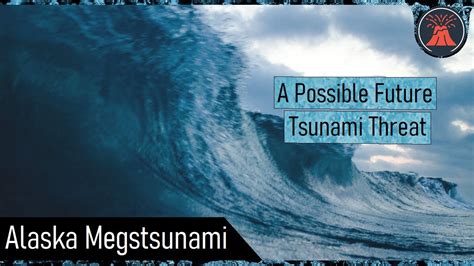
An underwater volcano near Antarctica is playing host to a massive nursery of icefish, with scientists estimating around 2.6 million nests, most containing golden eggs, discovered in the area. This unprecedented discovery, detailed in a recent study published in Current Biology, reveals the Weddell Sea’s volcanic region as a biological hotspot and the largest known fish breeding colony on Earth.
The discovery, made during an expedition by the German research vessel Polarstern, showcases an active ecosystem thriving in the harsh environment of the Southern Ocean. Researchers, using towed camera systems, stumbled upon the extensive nesting site near the Neumayer Channel in the eastern Weddell Sea. The area, spanning approximately 240 square kilometers (93 square miles), is dominated by nests of the Jonah’s icefish (Neopagetopsis ionah).
“The idea that such a huge breeding area of icefish exists at the Weddell Sea was totally unexpected,” said Autun Purser, a marine biologist at the Alfred Wegener Institute in Bremerhaven, Germany, and lead author of the study.
The density of nests in certain areas is remarkable, averaging about one nest every three square meters. The researchers estimate that about one-third of the nests contained eggs, and they believe the fish are using the geothermal heat from the volcano to keep the eggs warm and accelerate their development. The water temperature at the seafloor in the nesting area is approximately 2 degrees Celsius (3.6 degrees Fahrenheit) warmer than surrounding areas, likely due to hydrothermal vents associated with the volcanic activity.
The presence of such a large and dense breeding colony also attracts a variety of other marine life. The scientists observed a higher abundance of Weddell seals in the area, suggesting they are drawn to the location to feed on the icefish. This highlights the importance of the volcanic region as a key habitat within the Antarctic ecosystem.
The discovery raises critical questions about the vulnerability of this unique ecosystem to climate change and human activities, such as fishing. The researchers emphasize the need for increased monitoring and protection measures to ensure the long-term survival of the icefish colony and the surrounding environment.
Unprecedented Scale of the Discovery
The scale of the icefish breeding colony is unparalleled. Previous studies have identified icefish nests, but none have approached the density and extent of this newly discovered site. The researchers believe that the volcanic activity plays a crucial role in creating a favorable environment for the icefish to reproduce. The warmer water temperatures likely shorten the incubation period of the eggs, increasing their chances of survival.
The location of the breeding colony near the Neumayer Channel is also significant. The channel is a deep-water passage that connects the Weddell Sea to the Southern Ocean. This connection allows for the exchange of nutrients and other resources, which may support the high density of fish in the area.
Methodology and Technology Used
The discovery was made possible by the use of advanced underwater camera technology. The researchers deployed a towed camera system from the Polarstern, which allowed them to survey the seafloor in detail. The camera system was equipped with high-resolution cameras and lights, which captured images and videos of the icefish nests.
The researchers analyzed the images and videos to identify the nests and estimate their density. They also collected water samples to measure the temperature and salinity of the water. These data were used to confirm the presence of geothermal activity in the area.
Purser explained that the OFOBS (Ocean Floor Observation and Bathymetry System) “was towed at a height of about 1.5 meters (4.9 feet) above the seafloor” and it captured images of the nests. The scientists meticulously reviewed hundreds of thousands of images to count the nests and analyze their contents.
Ecological Significance
The icefish breeding colony is a vital component of the Antarctic ecosystem. Icefish are a key prey species for seals, seabirds, and other marine predators. The abundance of icefish in the volcanic region supports a diverse community of marine life.
The researchers observed a significant increase in the number of Weddell seals in the area. This suggests that the seals are attracted to the breeding colony to feed on the icefish. The seals, in turn, play a role in regulating the icefish population.
The presence of the breeding colony also has implications for the carbon cycle. Icefish consume plankton and other organic matter, which helps to remove carbon dioxide from the atmosphere. The abundance of icefish in the volcanic region contributes to the overall health of the ocean.
Vulnerability and Conservation
Despite its ecological importance, the icefish breeding colony is vulnerable to a number of threats. Climate change is causing the ocean to warm and become more acidic. This could negatively impact the icefish and their eggs.
Human activities, such as fishing, also pose a threat to the breeding colony. Icefish are commercially harvested in some parts of the Antarctic. Overfishing could deplete the icefish population and disrupt the food web.
The researchers emphasize the need for increased monitoring and protection measures to ensure the long-term survival of the icefish colony. They recommend establishing a marine protected area in the volcanic region to limit fishing and other human activities.
Purser stated, “We need to understand why the fish are there and what the effect would be if fishing were allowed.”
The discovery highlights the importance of protecting the Antarctic environment. The Southern Ocean is a unique and fragile ecosystem that is home to a wide variety of marine life. It is crucial to take steps to protect this environment from the impacts of climate change and human activities.
Geothermal Activity and its Role
The geothermal activity associated with the underwater volcano is a key factor in creating a favorable environment for the icefish breeding colony. The warmer water temperatures likely accelerate the development of the eggs, increasing their chances of survival.
Hydrothermal vents release heat and chemicals into the surrounding water. These chemicals can provide nutrients for marine organisms, such as bacteria and algae. These organisms, in turn, provide food for the icefish.
The researchers believe that the geothermal activity also helps to create a stable environment for the eggs. The warmer water temperatures prevent the eggs from freezing, and the chemicals released from the hydrothermal vents may protect the eggs from disease.
The location of the nests also suggests that the icefish are actively seeking out areas with geothermal activity. The nests are clustered around hydrothermal vents, which indicates that the fish are aware of the benefits of these areas.
Future Research Directions
The discovery of the icefish breeding colony opens up new avenues for research. Scientists are interested in learning more about the ecology of the icefish, the role of geothermal activity in the breeding colony, and the vulnerability of the colony to climate change and human activities.
Future research will focus on:
- Monitoring the icefish population to track its size and health.
- Studying the genetics of the icefish to understand their evolutionary history.
- Investigating the role of geothermal activity in the development of the eggs.
- Assessing the impacts of climate change on the icefish and their habitat.
- Developing strategies for protecting the icefish colony from human activities.
The researchers are also interested in exploring other volcanic regions in the Antarctic to see if they also support icefish breeding colonies. This could help to identify other important habitats and inform conservation efforts.
The Broader Context of Antarctic Research
This discovery is part of a larger effort to understand the Antarctic environment. The Antarctic is a vast and remote region that is home to a unique ecosystem. Scientists are working to understand how this ecosystem functions and how it is being affected by climate change and human activities.
The Antarctic is also an important area for climate research. The ice sheets that cover the continent contain a vast amount of frozen water. If these ice sheets were to melt, they would cause a significant rise in sea level. Scientists are studying the ice sheets to understand how they are changing and how they might affect sea level in the future.
The research in the Antarctic is essential for understanding the global climate system and for developing strategies to mitigate the impacts of climate change. The discovery of the icefish breeding colony highlights the importance of this research and the need to continue exploring and protecting the Antarctic environment.
Implications for Marine Protected Areas
The discovery of this massive icefish breeding colony adds significant weight to the arguments for establishing Marine Protected Areas (MPAs) in the Weddell Sea and other vulnerable regions of Antarctica. MPAs are designated areas where human activities, such as fishing and mining, are restricted or prohibited to protect marine ecosystems.
The researchers involved in this study strongly advocate for the establishment of an MPA in the region of the icefish breeding colony. Such a measure would help to safeguard the colony from the potential impacts of fishing and other human activities.
The Commission for the Conservation of Antarctic Marine Living Resources (CCAMLR) is the international body responsible for managing fisheries in the Southern Ocean. CCAMLR has already established several MPAs in the Antarctic, but there are ongoing efforts to expand the MPA network to include other ecologically important areas.
The scientific data from this discovery provides compelling evidence for the need to protect this unique and vulnerable ecosystem. The establishment of an MPA would not only protect the icefish breeding colony but also contribute to the overall health and resilience of the Antarctic marine environment.
Public Awareness and Education
The discovery of the icefish breeding colony has captured the attention of the public and the media. This provides an opportunity to raise awareness about the importance of the Antarctic environment and the threats it faces.
Educational programs and outreach activities can help to inform people about the unique ecosystem of the Antarctic and the need to protect it. These programs can also highlight the role of science in understanding and addressing environmental challenges.
By increasing public awareness and education, we can foster a greater appreciation for the Antarctic and inspire action to protect it for future generations.
Ongoing Monitoring and Research
The initial discovery is just the beginning of ongoing monitoring and research efforts in the area. Scientists plan to return to the site to conduct more detailed studies of the icefish breeding colony.
These studies will involve:
- Using remotely operated vehicles (ROVs) to explore the seafloor in greater detail.
- Collecting samples of water, sediment, and icefish to analyze in the laboratory.
- Deploying acoustic sensors to monitor the behavior of the icefish and other marine animals.
- Using satellite imagery to track changes in the ice cover and water temperature.
The data collected from these studies will provide valuable insights into the ecology of the icefish breeding colony and the factors that influence its health and stability. This information will be crucial for developing effective conservation strategies.
Technological Advancements Driving Discovery
The discovery underscores the increasing role of technology in marine research. The advanced towed camera systems used in this study allowed scientists to survey the seafloor in unprecedented detail. These systems are equipped with high-resolution cameras, powerful lights, and sophisticated navigation systems.
Other technologies that are being used in Antarctic research include:
- Autonomous underwater vehicles (AUVs) that can operate independently for extended periods.
- Satellite sensors that can monitor ice cover, water temperature, and other environmental parameters.
- Genomic sequencing that can be used to study the diversity and evolution of marine organisms.
These technological advancements are transforming our ability to explore and understand the ocean. They are providing new insights into the complex processes that shape marine ecosystems and the challenges they face.
The Significance of International Collaboration
The discovery of the icefish breeding colony is a testament to the power of international collaboration in scientific research. The expedition that made the discovery involved scientists from multiple countries and institutions.
International collaboration is essential for addressing the complex environmental challenges facing the Antarctic. The Antarctic Treaty System provides a framework for cooperation among nations in the region. This system promotes scientific research, environmental protection, and peaceful use of the Antarctic.
By working together, scientists from around the world can pool their resources, expertise, and knowledge to advance our understanding of the Antarctic and to develop effective strategies for its protection.
FAQ: Underwater Volcano and the Golden Eggs
1. What exactly was discovered near the underwater volcano in Antarctica?
Scientists discovered an enormous breeding colony of Jonah’s icefish (Neopagetopsis ionah) near an active underwater volcano in the Weddell Sea. They estimate there are about 2.6 million nests in the area, many filled with golden-colored eggs. This is the largest fish breeding colony ever found.
2. How did the scientists find this massive breeding colony?
The discovery was made during an expedition on the German research vessel Polarstern. Researchers used a towed camera system called OFOBS (Ocean Floor Observation and Bathymetry System), which was deployed to survey the seafloor. The system captured images and videos of the nests, allowing scientists to analyze their density and contents.
3. Why is the underwater volcano important for the icefish breeding colony?
The volcanic activity creates a warmer environment than the surrounding waters. The water temperature near the seafloor in the nesting area is about 2 degrees Celsius (3.6 degrees Fahrenheit) warmer, likely due to hydrothermal vents. This warmer temperature is believed to accelerate the development of the icefish eggs, increasing their chances of survival.
4. Are there any potential threats to this icefish breeding colony?
Yes, the colony faces several potential threats. Climate change could cause the ocean to warm and become more acidic, negatively impacting the icefish and their eggs. Human activities, such as fishing, could also pose a significant threat by depleting the icefish population and disrupting the food web. The researchers emphasize the need for increased monitoring and protection measures, potentially including a marine protected area.
5. What is the significance of this discovery for the broader Antarctic ecosystem?
The icefish breeding colony is a vital component of the Antarctic ecosystem. Icefish are a key prey species for seals, seabirds, and other marine predators. The abundance of icefish in the volcanic region supports a diverse community of marine life. The discovery highlights the importance of protecting the Antarctic environment and underscores the need for further research and conservation efforts. The presence of a large predator population, such as Weddell seals, indicates the importance of this ecosystem in sustaining life in these harsh environments.









